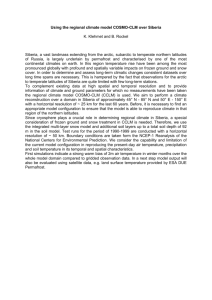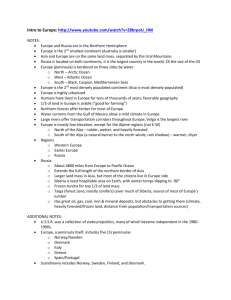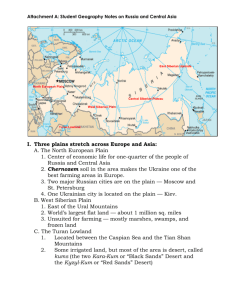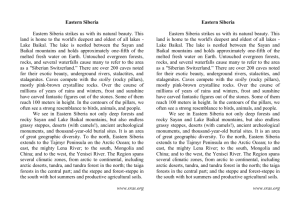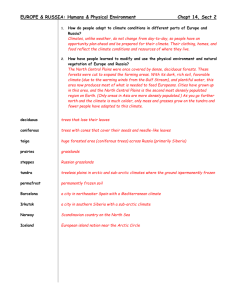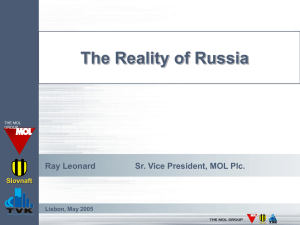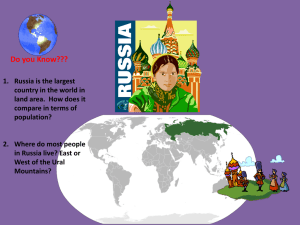Climate in Russia
advertisement
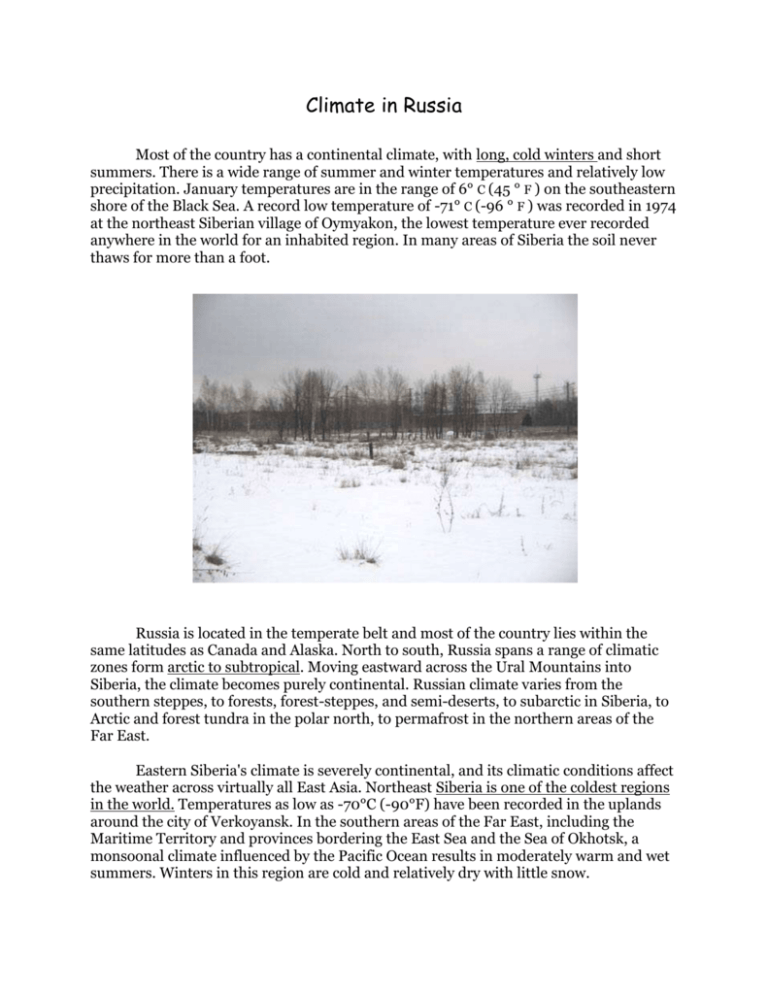
Climate in Russia Most of the country has a continental climate, with long, cold winters and short summers. There is a wide range of summer and winter temperatures and relatively low precipitation. January temperatures are in the range of 6° C (45 ° F ) on the southeastern shore of the Black Sea. A record low temperature of -71° C (-96 ° F ) was recorded in 1974 at the northeast Siberian village of Oymyakon, the lowest temperature ever recorded anywhere in the world for an inhabited region. In many areas of Siberia the soil never thaws for more than a foot. Russia is located in the temperate belt and most of the country lies within the same latitudes as Canada and Alaska. North to south, Russia spans a range of climatic zones form arctic to subtropical. Moving eastward across the Ural Mountains into Siberia, the climate becomes purely continental. Russian climate varies from the southern steppes, to forests, forest-steppes, and semi-deserts, to subarctic in Siberia, to Arctic and forest tundra in the polar north, to permafrost in the northern areas of the Far East. Eastern Siberia's climate is severely continental, and its climatic conditions affect the weather across virtually all East Asia. Northeast Siberia is one of the coldest regions in the world. Temperatures as low as -70°C (-90°F) have been recorded in the uplands around the city of Verkoyansk. In the southern areas of the Far East, including the Maritime Territory and provinces bordering the East Sea and the Sea of Okhotsk, a monsoonal climate influenced by the Pacific Ocean results in moderately warm and wet summers. Winters in this region are cold and relatively dry with little snow.
